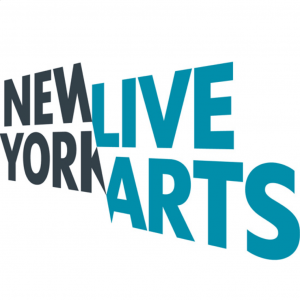 A while back I posted an essay on Name changes: the real process. I based it on the merger of the Bill T. Jones / Arnie Zane Dance Company with Dance Theater Workshop, a groundbreaking event in the performing arts and dance world.
A while back I posted an essay on Name changes: the real process. I based it on the merger of the Bill T. Jones / Arnie Zane Dance Company with Dance Theater Workshop, a groundbreaking event in the performing arts and dance world.
No one had done anything like this in the U.S., although London has had since 1969 The Place | a powerhouse of contemporary dance which combines the Richard Alston Dance Company, the Robin Howard Dance Theatre, and the London Contemporary Dance School. The U.K. considers it their premier center for contemporary dance.
Okay, but that’s the U.K. Contemporary dance in the U.S., long the scrappy little sibling of the performing arts, has looked for ways over many years to expand awareness and appreciation, and create larger audiences. The field has evolved over the decades from pure dance to broader, movement-based performance that goes well beyond dance, thus the name, “Dance Theater Workshop” over 45 years ago.
Now, the field continues to evolve with this merger at the forefront wanting to further break the boundaries among performance genres. Why, even Bill T. Jones doesn’t want to use the word “dance” anymore. The new website states, “New York Live Arts supports movement-based artists through new and adaptive approaches to producing, presenting, education, and community engagement.”
So what about that name? Is this the name of a game-changing, new type of performing arts organization? Mmmm, maybe. Each part taken separately is certainly evocative and emotionally charged. But together the words sound a little generic and somewhat vague. What is “New York Live Arts?” Is it a category or an organization? Is it like Live Nation? Is it a commercial venture? Aren’t all arts live? Does that mean static art in museums is dead? Why “New York” in the name? These are some of the questions I’ve heard in my admittedly unscientific, very small, and anecdotal research.
What we know is that the combined organization wanted a name that is more descriptive than emotional and a location-based name would be appropriate because the new organization will have a large international presence. Okay, fair enough. But names are often contextualized by their logotypes, so what about that aspect?
In my last essay I wrote that one’s logotype is the tip of the iceberg of one’s brand strategy. And I think New York Live Arts now has a pretty good tip. A home-run I’d say. The new logotype introduced April 18 and designed by London-based design firm, Next Big Thing, is bold, dynamic, forward-moving, contemporary, and lively. Hey, those are all attributes that we’d want ascribed to the new organization. And that’s what we call strategic design.
Notice I’ve stayed away from stating that I LIKE the design, mostly because I can hear in my mind my college graphic design professor, Kathy Bick, yelling, “I don’t care if you LIKE the design, I only care how you think it delivers on the design objectives because that’s what defines a designer: meeting criteria.” This realization of objectives is what we strive for every day in our work. I’d say New York Live Arts has done a darn good job. So bravo New York Live Arts, you’ve set up, articulated, and successfully visualized the promise, now the invigorating part: delivering on it.
UPDATE. Some of you have asked about or been searching for Kathy Bick. I recently reconnected with her. She can be reached at ChinaKathyUS8@gmail.com

3 comments
Val Lopez says:
Apr 24, 2012
Hey! Kathy was my professor too! I don’t know if I’d describe her tone as “yelling” as much as I would ” excited enthusiasm.”
I would agree that the typeface says nothing “artsy” to me.
James says:
May 9, 2011
I have to agree with Amy. I don’t think the typeface conveys anything about the organization. But I’m glad to see you’ve sparked the discussion. Thanks…
Amy says:
May 9, 2011
Hi James. Thanks for posting this. Really interesting. I don’t get the same reaction from this logo as you do. I like the movement in it. And maybe it’s the name that has me stumped. But I don’t think the typeface conveys anything about the organization either.
But love this discussion. Thanks for sharing.